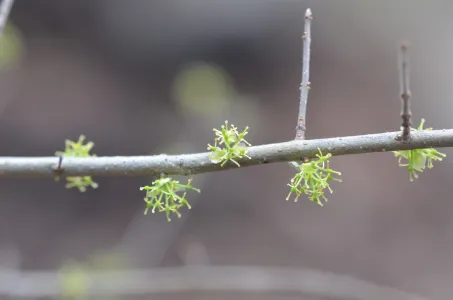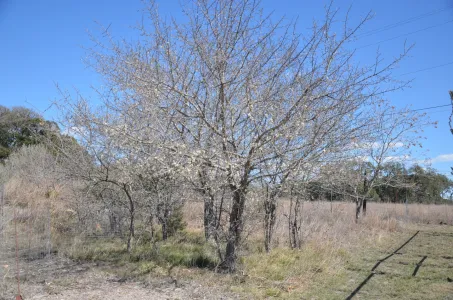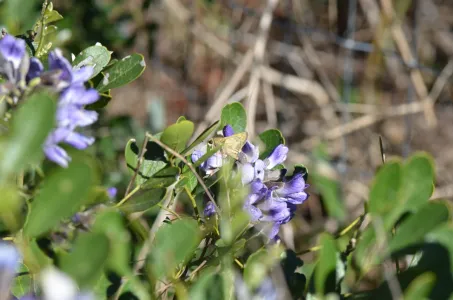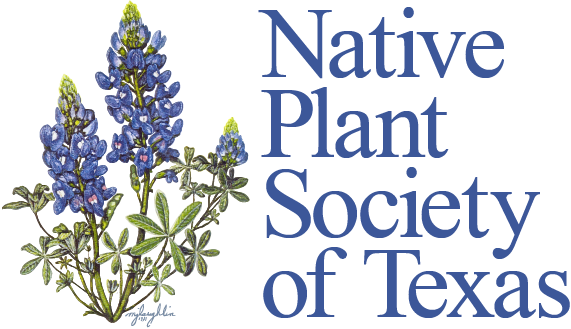By Delmar Cain

Spring may be on its way, but 50 mph winds from the north with morning lows near freezing tell us that it has not arrived yet. Those brisk winds were enough to blow the almost budding tips from many of the trees. Trees and plants struggle against the vicissitudes of the weather just as humans do.
Even so the curtain has already lifted for some of the early performers. One of the very early performers, Spring Herald (Forestiera pubescens), obviously acquired one of its common names because it blooms in February or March even before it puts on leaves. This member of the Olive family is also known by other common names including Texas elbow – bush, downy forestiera, Texas forsythia, spring goldenglow, tanglewood, devil’s elbow and chaparral.
Texas elbow-bush is a medium shrub that can form thickets. It has an irregular growth with its branches growing at angles of almost 90 degrees. Its pale green leaves can contribute a nice contrast in a background role. Female plants develop dark fleshy fruits, which are food source for birds and small mammals.

Although it may be called Spring Herald, its announcement of spring will be missed by anyone expecting a showy sign. One might call it a “tinkling cymbal”. But its fragrance is not lost on bees, butterflies and moths. Also it is a larval host plant for two sphinx moths and also for some hairstreak butterfly species. Since it is one of the earliest bloomers, without much competition, it doesn’t waste energy on a big display of petals.
In contrast another early performer in the Rose family obviously has energy to burn. Its spring display puts it in the Led Zeppelin range of the heavy metal category. The Mexican plum or bigtree plum (Prunus mexicana) begins the spring with the showiest of white or slightly pink flowers and an abundance of fragrance. As a result it attracts a crowd of insects that want to report for the nectar festival that it’s sponsoring.

The Mexican plum, a single-trunked tree native as far north as South Dakota and Wisconsin and east to North Carolina, also extends its range into Texas and Mexico. It begins blooming as early as February and will produce fruit, which ripens between July and September. Its fruit is eaten by birds and mammals and is turned into preserves by those find pleasure in home food preparation.
Another early performer is a favorite of most, including commercial and residential landscapers. It is unusual to see a new installation of plants that does not include at least one Texas mountain laurel, mescal bean or frijolito (Sophora secondiflora), a member of the Pea family. An evergreen shrub or tree in the Hill Country, which deer browse only as a last resort, deserves a prominent place on every landscape list. That it also comes with drooping clusters of fragrant blue flowers simply makes it a sure bet.

Even though it is one of the first on stage in the spring, don’t wait too long to catch the performance. The blooms fade quickly after an early appearance something like a warm-up band. And because there are not many other performances taking place, this warm-up band draws a good crowd of bees, flies, and butterflies. With fertilization complete the Texas mountain laurel can expend its energy making fruit, bright red seeds enclosed in a pod, and adding height and a new growth of leaves.
And so we begin another season with three early performers from three entirely different plant families. These early performances may be some of the best of the season in what is giving every indication of being another dry year. But I take some comfort in the fact that our native plants didn’t make it this far by being unable to take a drought. It may not be a spectacular but the show will go on.
